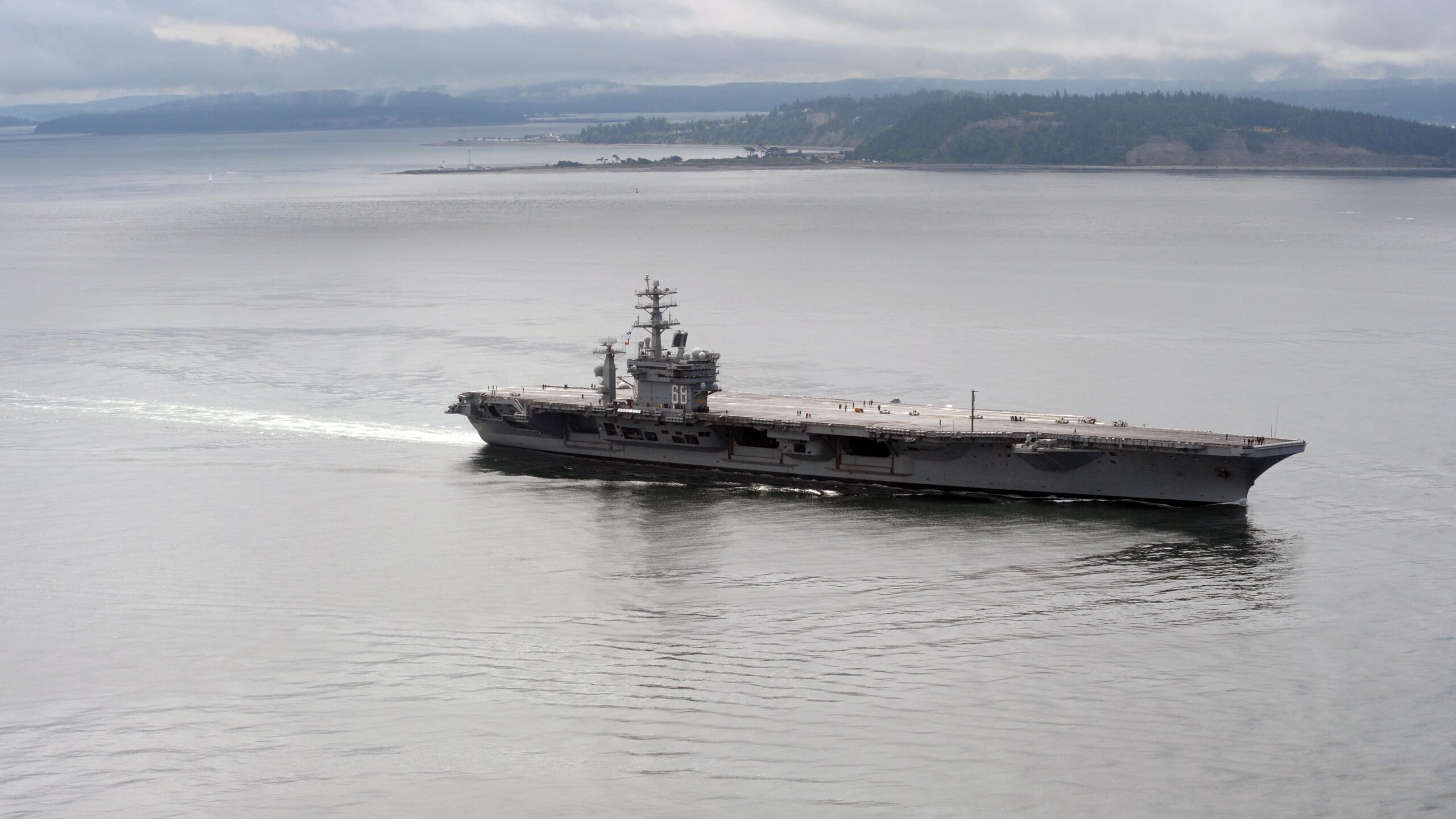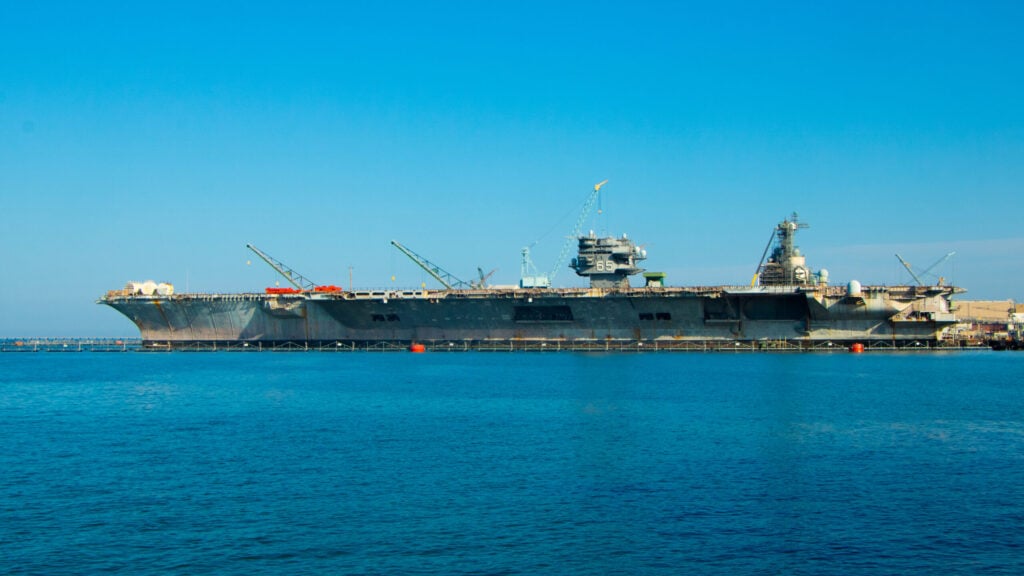
The aircraft carrier USS Nimitz (CVN 68) cruises in the Strait of Juan de Fuca. (U.S. Navy photo by Mass Communication Specialist 2nd Class John Hetherington)
GREEN BAY, Wisc. — The Navy this month began planning the years-long ordeal to defuel and dispose of the nuclear-powered aircraft carrier Nimitz (CVN-68), only the second ship of its kind to undergo that process.
The fiscal 2024 budget request extends the Nimitz’s service life by 13 months, from April 2025 to May 2026, a Navy spokeswoman told Breaking Defense. But the disposal process for a massive warship, commissioned in 1975, that has long carried nuclear reactors requires the service to begin planning years in advance.
To do that, the Navy has tapped HII’s Newport News Shipbuilding to help establish the requirements, according to a publicly available notice posted last week to the government’s contracting website, SAM.gov.
“Our Newport News Shipbuilding team is experienced at inactivating and defueling nuclear-powered aircraft carriers. We look forward to leveraging our expertise and industrial relationships to team with the Navy on preparing for the defueling and inactivation of USS Nimitz (CVN 68),” said HII spokesman Todd Corillo.
As the Navy and HII begin work on how to safely shut down the Nimitz, the former aircraft carrier Enterprise (CVN-65), which was decommissioned back in 2017, is also awaiting its final disposal. That ship is sitting at Newport News Shipbuilding just a few hundred yards away from where the next ship to carry its name is being built.
The process for how the Navy defuels and inactivates the former Enterprise will likely set precedents the service will follow when disposing of the Nimitz and other nuclear-powered aircraft carriers. But all aircraft carriers are not alike. Jamie Koehler, the Navy spokeswoman, told Breaking Defense that while the ships are similar in type, they also contain significant design differences which will be reflected in the disposal process.
“Ex-Enterprise and Nimitz are similar in that they are large, rugged ships containing low levels of various hazardous materials. However, they are of considerably different design, so the approach to inactivation will reflect those differences,” she said. “Any disposal options that involve Nimitz will be evaluated to ensure [National Environmental Policy Act] compliance, as is currently being done with ex-Enterprise.”
One of the key reasons the disposal process for the Enterprise has taken this long is because it will be the first nuclear-powered aircraft carrier the service has had to defuel and the Pentagon is obligated, under the National Environmental Policy Act, to minimize potential harm to the environment.
The latest step in the process involved the Navy publishing a draft environmental impact statement in August 2022, a document that outlines a handful of options.
The first involves employing a commercial dismantlement facility for non-radiological portions of the ship, while the reactors would be transported to Puget Sound Naval Shipyard “for recycling, construction of eight single reactor compartment packages, and shipment by barge to the Port of Benton near the Department of Energy (DOE) Hanford Site, and via a multiple-wheel, high-capacity transporter to the DOE Hanford Site for disposal,” according to the draft impact statement.
The second method is largely the same as the first, except the service would construct “four dual reactor compartment packages” rather than eight. “The packages would be heavier and larger than reactor compartment packages currently transported to the Department of Energy (DOE) Hanford Site under the existing Navy program,” the statement adds.
The third alternative, which the Navy indicates is its preferred method, involves contracting with industry for all parts of the disposal, including the reactors. “The Navy is evaluating three locations for commercial dismantlement: the Hampton Roads Metropolitan Area, Virginia; Brownsville, Texas; and Mobile, Alabama,” according to the impact statement.
The Navy said it prefers this option because it allows workers at Puget Sound to stay focused on fleet maintenance, rather than diverting their attention to the Enterprise.
In its environmental impact statements, the Navy also routinely includes a “no action alternative,” which in this case states the service would effectively have to keep the former Enterprise in port indefinitely and continue to monitor and maintain its nuclear components.
The draft statement was subjected to a period of public comment last year which has now closed. Koehler, the Navy spokeswoman, said the final impact statement is expected to be published by the end of 2023.
Koehler also did not directly address a question about whether the Nimitz would require a separate environmental impact statement, except to say the Navy would comply with NEPA.

The former USS Enterprise (CVN-65) sits in port at Newport News Shipbuilding awaiting final disposal. (Justin Katz/Breaking Defense)
GD chief says Navy’s 1 sub buy won’t impact company short term, but out years less certain
The comments from the General Dynamics chief come on the same day President Joe Biden signed the national security supplemental, which includes billions for the sub industrial base.



























